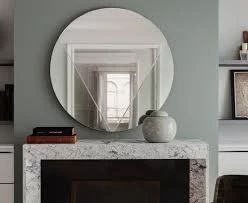

Understanding Double Pane Low-E Glass A Smart Choice for Energy Efficiency
In today's world, energy efficiency is a top priority for homeowners and builders alike. One of the most effective solutions for improving energy performance in residential and commercial buildings is the use of double pane low-emissivity (low-E) glass. This advanced glazing technology provides significant benefits that can help reduce energy costs and enhance comfort levels inside buildings.
What is Double Pane Low-E Glass?
Double pane low-E glass consists of two panes of glass separated by a sealed space filled with argon or another insulating gas. This design minimizes heat transfer between the interior and exterior of a building. The term “low-E” refers to a special coating that is applied to one of the glass panes. This coating reflects infrared light (which is responsible for heat) while allowing visible light to pass through. As a result, low-E glass helps maintain a consistent indoor temperature throughout the year.
Benefits of Double Pane Low-E Glass
1. Energy Efficiency One of the most significant advantages of double pane low-E glass is its energy efficiency. By reducing the amount of heat that enters or escapes a building, it helps maintain a stable indoor climate. This can lead to lower heating and cooling costs, making it an economical choice for property owners.
2. UV Protection Low-E coatings also provide protection against harmful ultraviolet (UV) rays. These rays can cause fading of furniture, carpets, and artwork. By blocking a substantial portion of UV radiation, double pane low-E glass helps preserve the interior of a building, prolonging the life of furnishings and mitigating the need for costly replacements.
3. Noise Reduction The dual-pane design of low-E glass also contributes to sound insulation. The space between the two panes acts as a buffer, helping to minimize outside noise. This can be especially beneficial for homes or buildings located in busy urban areas or near highways, providing a quieter and more peaceful indoor environment.

4. Condensation Control Another advantage of double pane low-E glass is its ability to reduce condensation on windows. When the interior surface of a window is warmer, it is less likely to attract moisture. This is crucial in preventing mold growth and maintaining good indoor air quality.
5. Sustainability Using double pane low-E glass contributes to environmental sustainability. By improving a building's energy efficiency, it reduces the overall energy demand, which can lead to lower carbon emissions. This is particularly relevant as communities aim to combat climate change and promote greener building practices.
6. Versatility Double pane low-E glass is available in various styles and can be integrated into different types of windows and architectural designs. Whether for modern homes or traditional buildings, it provides aesthetic flexibility without compromising performance.
Installation and Cost Considerations
When considering double pane low-E glass for your home or building project, it’s essential to work with a qualified professional to ensure proper installation. The initial investment may be higher than traditional single-pane solutions; however, the long-term savings on energy bills often justify the cost. Many homeowners find that the return on investment is achieved within a few years due to the reduced energy consumption.
Additionally, various incentives and rebates may be available from local and federal governments to promote energy-efficient upgrades, further offsetting initial expenses.
Conclusion
Double pane low-E glass is undeniably a smart choice for anyone looking to enhance energy efficiency, increase comfort, and protect their interior spaces. Its numerous benefits, including energy savings, UV protection, noise reduction, and condensation control, make it an attractive option for modern building practices. As we continue to prioritize sustainability and environmental responsibility, incorporating technologies like double pane low-E glass will play a crucial role in creating more energy-efficient homes and buildings. Whether you are renovating an existing space or constructing a new one, considering this advanced glazing technology can lead to lasting benefits for you and the environment.